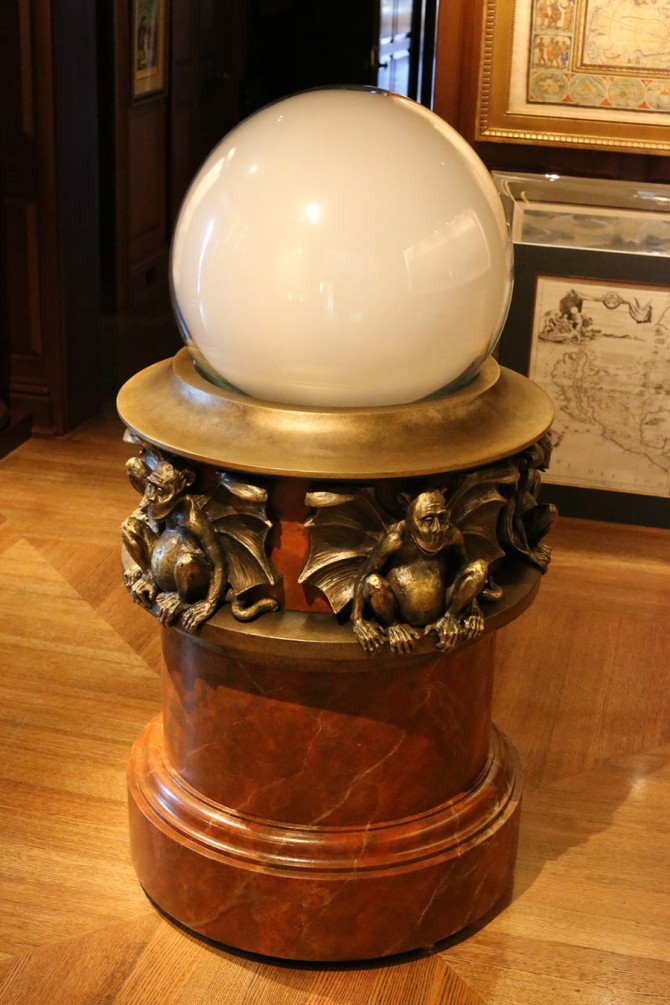Wicked Witch’s iconic gazing ball visits Cornell Library
By Melanie Lefkowitz
The crystal ball from the movie “The Wizard of Oz” – one of Hollywood’s most iconic objects – is coming to Cornell University Library this spring.
On view alongside an exhibition of Cornell’s witchcraft collection, the famous film prop has been equipped with technology to recreate the movie’s effect of conjuring images on within its surface.
The crystal ball has been loaned to the Division of Rare and Manuscript Collections by Jay Walker ’77, chairman of Walker Digital and founder of Priceline.com and Eileen Walker ’76, MBA ’78.
“We are honored to host this spectacular artifact, and grateful to Jay Walker for making this loan possible. This is the first time the crystal ball has been displayed outside of the Walker Library of the History of the Human Imagination and we hope students and the community at large will enjoy it,” said Katherine Reagan, Cornell’s curator of rare books and manuscripts.
The crystal ball will be on view in the Kroch Library rotunda, Level 2B, from April 30 until June 25. Open from 9 a.m. to 5 p.m. Monday through Friday, and from 1 p.m. to 5 p.m. on Saturday May 5, the exhibit is free and open to the public.
When “The Wizard of Oz” was made in 1939, artists painstakingly hand-painted every frame of film to depict what the Wicked Witch of the West saw in the crystal ball – one of film’s earliest special effects.
The crystal ball was innovative not only as a special effect, but as a concept, Walker said.
“Most people think of crystal balls as seeing the future, but the Wicked Witch used the crystal ball for seeing the present. She used it as a remote viewing device to see what she needed to see. It was a bit like her Twitter feed,” he said. “Before the age of television, they imagined remote viewing in real time, with sound, color, the whole thing. So it’s a wonderful example of science fiction reading reality, as it often does.”
Around 25 inches in diameter and made of hand-blown glass, the crystal ball was believed lost until it was discovered in a prop house maintained by the creator of the crystal ball, Kenneth Strickfaden. A theater prop company constructed a replica of its missing wooden base, embellished with images of flying monkeys.
Technicians also outfitted the ball to display scenes from the movie, using a thin, inflatable screen melded to the ball’s shape by an air pump, as well as a light projection system.
The crystal ball is being shown in association with “The World Bewitch’d: Visions of Witchcraft from the Cornell Collections,” which documents the spread of the belief in witchcraft across Europe, including the long history of persecution of accused witches. “The World Bewitch’d” was curated by University Librarian Emerita Anne R. Kenney and Kornelia Tancheva, university librarian at the University of Pittsburgh.
Melanie Lefkowitz is staff writer, editor and social media coordinator for Cornell University Library.
Media Contact
Get Cornell news delivered right to your inbox.
Subscribe

